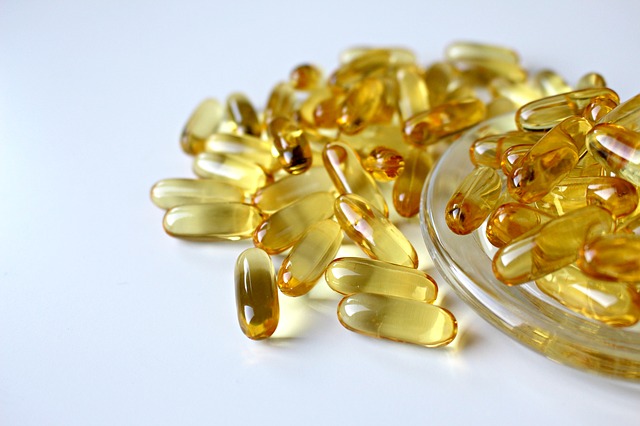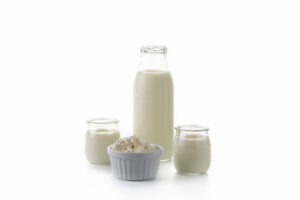
pronounced changes were seen following administration of a probiotic mixture containing mostly live strains
Wheat Germ Oil And Probiotic Combo
NAFLD, or non-alcoholic fatty liver disease, is marked by the buildup of lipids in liver cells, exceeding 5% of the liver’s weight without heavy alcohol consumption or other liver diseases. It ranges from simple steatosis to non-alcoholic steatohepatitis (NASH), which can lead to varying degrees of fibrosis, cirrhosis, and even liver cancer. Insulin resistance plays a crucial role in the onset and progression of NAFLD, affecting glucose, fatty acid, and lipoprotein metabolism.
Currently, there are no approved medications for NAFLD. Despite many clinical trials, treatments have been suggested, such as drugs for insulin resistance and weight loss like metformin and thiazolidinediones, lipid-lowering drugs, antioxidants, and TNF-α agents. Recently, altering gut microbiota with probiotics has been proposed as a potential treatment. Probiotics are live microorganisms that benefit the host when administered in adequate amounts. Studies on animals indicate that probiotics and prebiotics can alter microbiota, improve digestion, regulate appetite, and influence glucose and fat metabolism, improving insulin sensitivity and reducing chronic inflammation.
Previous studies on animals showed that combining probiotics with omega-3 fatty acids (Symbiter-Omega) significantly reduced liver steatosis and triglyceride accumulation compared to probiotics alone. Based on this, a double-blind, single-center randomized clinical trial (RCT) was designed to evaluate the effectiveness of probiotics combined with omega-3 versus a placebo in type-2 diabetic patients with NAFLD.
Probiotic Combo With Flax and Wheat Germ Oil
This randomized control trial demonstrated that co-administration of a live multi-strain probiotic mixture with omega-3 fatty acids once daily for 8 weeks to patients with NAFLD can significantly reduce liver fat as measured by the Fatty Liver Index (FLI). This combination also improved serum lipid levels, metabolic profiles, and reduced chronic systemic inflammation. However, liver stiffness (LS) did not show significant changes in either group during the study. Outcomes align with those of Mofidi et al., who used similar measures to evaluate the efficacy of symbiotic supplementation in lean NAFLD patients. In their trial, after 28 weeks of administration, the reduction in hepatic steatosis and fibrosis measured by transient elastography (Fibroscan®) was significantly greater in the symbiotic group compared to the placebo group. The difference in LS results compared to our study could be attributed to the longer supplementation period in their study.
Previous reporting data from a randomized control trial with a similar design and endpoints, showing the beneficial effects of a probiotic formulation alone for managing NAFLD. After further investigations, this study found that supplementing live probiotic strains with omega-3 fatty acids leads to a more pronounced reduction in FLI and chronic inflammatory markers. Moreover, this combination significantly improves serum lipid parameters.
The beneficial effects of probiotic supplementation containing different Lactobacillus and Bifidobacterium strains in NAFLD have been demonstrated in several randomized control trials and summarized in recent meta-analyses. These studies showed that probiotic therapy significantly decreased transaminase levels, a marker of chronic systemic response (TNF-α), and improved lipid metabolism parameters such as total cholesterol (TC) and high-density lipoprotein (HDL).
Long-chain n-3 polyunsaturated fatty acids (n-3 PUFAs) have also been studied as a treatment for NAFLD. Preclinical studies demonstrated that dietary n-3 PUFAs prevent hepatic steatosis by down-regulating sterol regulatory element-binding protein 1c (SREBP-1c), a key transcription factor in lipogenesis, and up-regulating peroxisome proliferator-activated receptor (PPAR-α), which regulates genes involved in fatty acid oxidation. The excessive production of reactive oxygen species due to mitochondrial dysfunction causes lipid peroxidation, triggering inflammatory processes by activating redox-sensitive transcriptional factors like NF-κB, leading to necro-inflammation and activation of stellate cells, which causes fibrogenesis in NASH. Recent animal studies showed that LC n-3 PUFAs supplementation decreased hepatic oxidative stress by improving antioxidant status, restoring antioxidant enzyme activities and glutathione levels, and prevented high-fat-induced hepatic steatosis and inflammation by inhibiting NF-κB and decreasing proinflammatory cytokines TNF-α and IL-1β.
Recent randomized control trials indicate that n-3 LC polyunsaturated fatty acids supplementation, combined with protein meal replacement under calorie-restricted dietary conditions or lifestyle modification, significantly reduces waist circumference and exerts beneficial effects on metabolic parameters, including triglyceride (TG) levels, HOMA-IR, and IL-6.
Castro et al. analyzed 17 studies investigating the effects of n-3 PUFAs on markers of NAFLD. They found that twelve studies reported a decrease in liver fat and other NAFLD markers after n-3 PUFAs supplementation. However, five studies also involved dietary restriction and exercise alongside n-3 PUFA supplementation, indicating that n-3 PUFAs improve NAFLD independently of weight loss. The lack of improvement in some studies may be due to short duration, poor compliance, patient-specific factors, and the sensitivity of the methods used.
Three meta-analyses of randomized control trials of n-3 PUFA treatment for NAFLD examined 3 to 9 clinical trials each, involving up to 561 total patients. The n-3 PUFA dose ranged from 0.83 to 6.4 g/d, and the treatment period lasted from 2 to 18 months. The overall outcome indicates that n-3 PUFA treatment improves plasma markers of hepatic damage and TG levels but had inconsistent effects on plasma markers for cholesterol (TC, LDL-C, and HDL-C).
Finally, Rajkumar et al. compared the effects of probiotics VSL#3 with omega-3 fatty acids to single-arm therapy in apparently healthy overweight adult volunteers in a placebo-controlled double-blind trial. The study showed that VSL#3 supplementation increased Lactobacilli and Bifidobacteria and reduced Gram-negative bacteria, while the combination of probiotics and omega-3 fatty acids improved insulin sensitivity and reduced hsCRP levels more than probiotics alone.
HOMA-IR is Homeostatic Model Assessment for Insulin Resistance. A mathematical model that estimates insulin resistance using fasting plasma glucose and insulin levels. The model was developed using data from physiological studies and computer software that solves equations to estimate insulin resistance and pancreatic β-cell function. The model has since been improved to the HOMA2 model to better reflect human physiology.
More pronounced changes were seen following administration of a probiotic mixture containing mostly live strains compared to lyophilized ones.
Results
Co-administration of probiotics with omega-3 fatty acids can reduce liver fat, improve serum lipids and metabolic profiles, and reduce chronic systemic inflammation in NAFLD patients.
healthy blueberry wheat germ muffins
Low in sugar, additional yogurt and high in anti-oxidants. Quick and easy recipe.
how it works
Dietary n-3 PUFAs prevent hepatic steatosis by down-regulating sterol regulatory element-binding protein, a key transcription factor in lipogenesis, and up-regulating peroxisome proliferator-activated receptor, which regulates genes involved in fatty acid oxidation. The excessive production of reactive oxygen species due to mitochondrial dysfunction causes lipid peroxidation, triggering inflammatory processes by activating redox-sensitive transcriptional factors, leading to necro-inflammation and activation of stellate cells, which causes fibrogenesis in NASH. Long chain n-3 PUFAs supplementation decreases hepatic oxidative stress by improving antioxidant status, restoring antioxidant enzyme activities and glutathione levels, and preventing high-fat-induced hepatic steatosis and inflammation by inhibiting and decreasing pro-inflammatory cytokines.
conclusion
The “Symbiter Omega” was supplied by Scientific and Production Co. It contains combination of flax and wheat germ oil (250 mg of each, concentration of omega-3 fatty acids 1-5%), supplemented with biomass of 14 alive probiotic strains: Lactobacillus + Lactococcus (6×1010 CFU/g), Bifidobacterium (1×1010/g), Propionibacterium (3×1010/g), Acetobacter (1×106/g) genera. Over 8 weeks of interventional period, the patients received 1 sachet (10 grams) of probiotic-omega and placebo per day. All sachets were identical with similar characteristics in taste and appearance.
how to
“Symbiter Omega” 8 weeks.
safety
Gluten sensitive or other allergen sensitive people should avoid wheat germ. Refined wheat germ oil typically contains no gluten. Wheat germ was well tolerated and is a natural food.
Wheat germ and individual components have been extensively studied for a cross range of conditions, wheat germ oil has similar benefits.
According to the US FDA, wheat germ oil is gluten-free if it contains no more than 20 parts per million of gluten. This is because the refining process typically removes all gluten proteins from wheat germ oil. However, it’s possible that refined oils may contain trace amounts of gluten.
If you like natural health tips like the ones above you can learn more in Immune For Life
